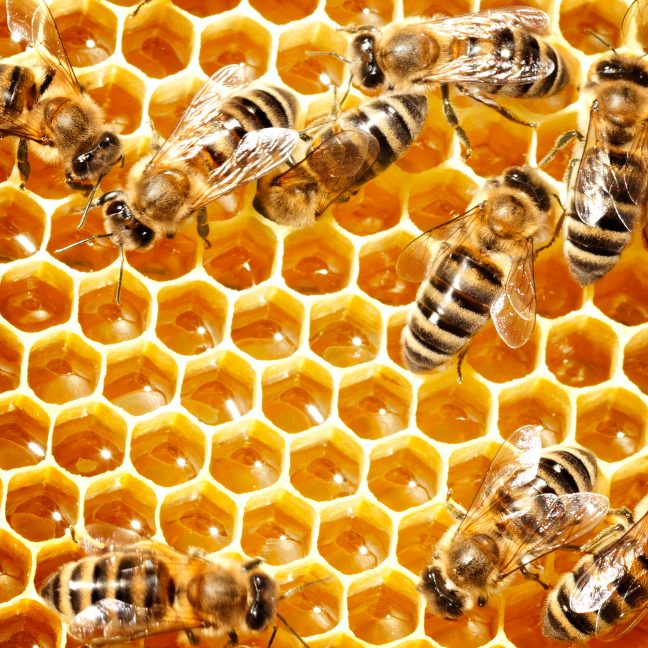Honey
Honey is honey, it’s just that simple.
A bottle of pure honey contains the natural sweet substance produced by honey bees from the nectar of plants or secretions of living parts of plants. Nothing else.
When scientists begin to look for all of the elements found in this wonderful product of nature, they find a complex of naturally flavored sugars as well as trace enzymes, minerals, vitamins, and amino acids.
Honey is made by bees in one of the world’s most efficient facilities, the beehive. The 60,000 or so bees in a beehive may collectively travel as much as 55,000 miles and visit more than two million flowers to gather enough nectar to make just a pound of honey!
The color and flavor of honey differ depending on the bees’ nectar source (the blossoms). In fact, there are more than 300 unique kinds of honey in the United States, originating from such diverse floral sources as Clover, Eucalyptus and Orange Blossoms. In general, lighter colored honeys are mild in flavor, while darker honeys are usually more robust in flavor.
HOW HONEY IS MADE:
All-Natural Production
From the Bee
Honey gets its start as flower nectar, which is collected by bees, naturally broken down into simple sugars and stored in honeycombs. The unique design of the honeycomb, coupled with constant fanning by the bees’ wings, causes evaporation to take place, creating the thick, sweet liquid we know as honey.
The color and flavor of honey varies from hive to hive based on the type of flower nectar collected by the bees. For example, honey made from Orange Blossom nectar might be light in color, whereas honey from Avocado or Wildflowers might have a dark amber color.


HARVESTING AND EXTRACTING
To Hive
Beekeepers — large and small — harvest honey by collecting the honeycomb frames and scraping off the wax cap that bees make to seal off honey in each cell.
Once the caps are removed, the frames are placed in an extractor — a centrifuge that spins the frames, forcing honey out of the comb. The honey is spun to the sides of the extractor, where gravity pulls it to the bottom and it can be collected.
STRAINING AND BOTTLING
To Packaging
After the honey is extracted, it is strained to remove any remaining pieces of wax or other particles. Some beekeepers and bottlers might heat the honey to make it easier to strain, but this does nothing to alter the liquid’s natural composition. It only makes the straining process easier and more effective.
After straining, it’s time to bottle, label and distribute the honey to retail outlets. Whether the container is glass or plastic, or purchased at the grocery store or farmers market, if the ingredient label says pure honey, you can rest assured that nothing was added, from bee to hive to bottle.

